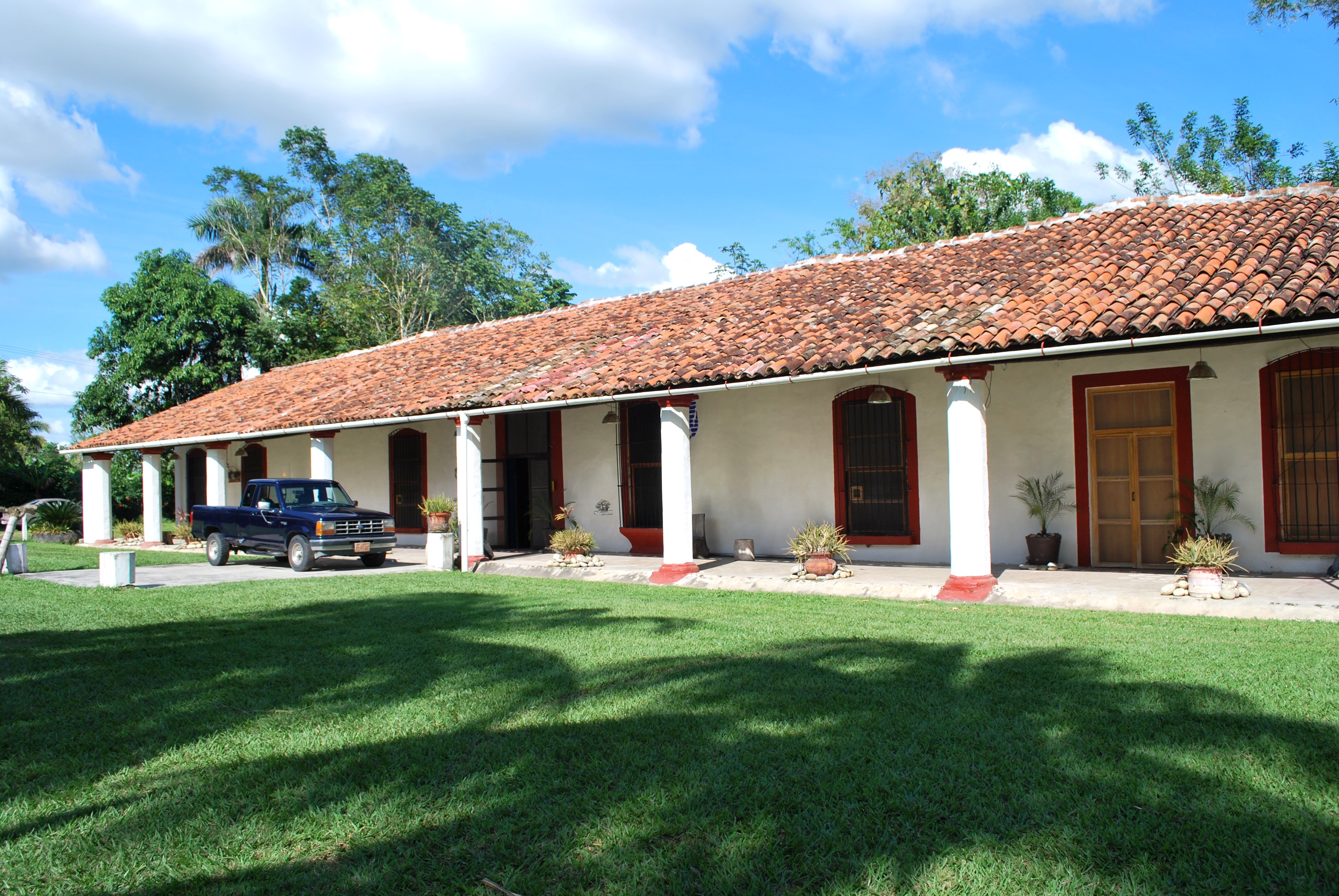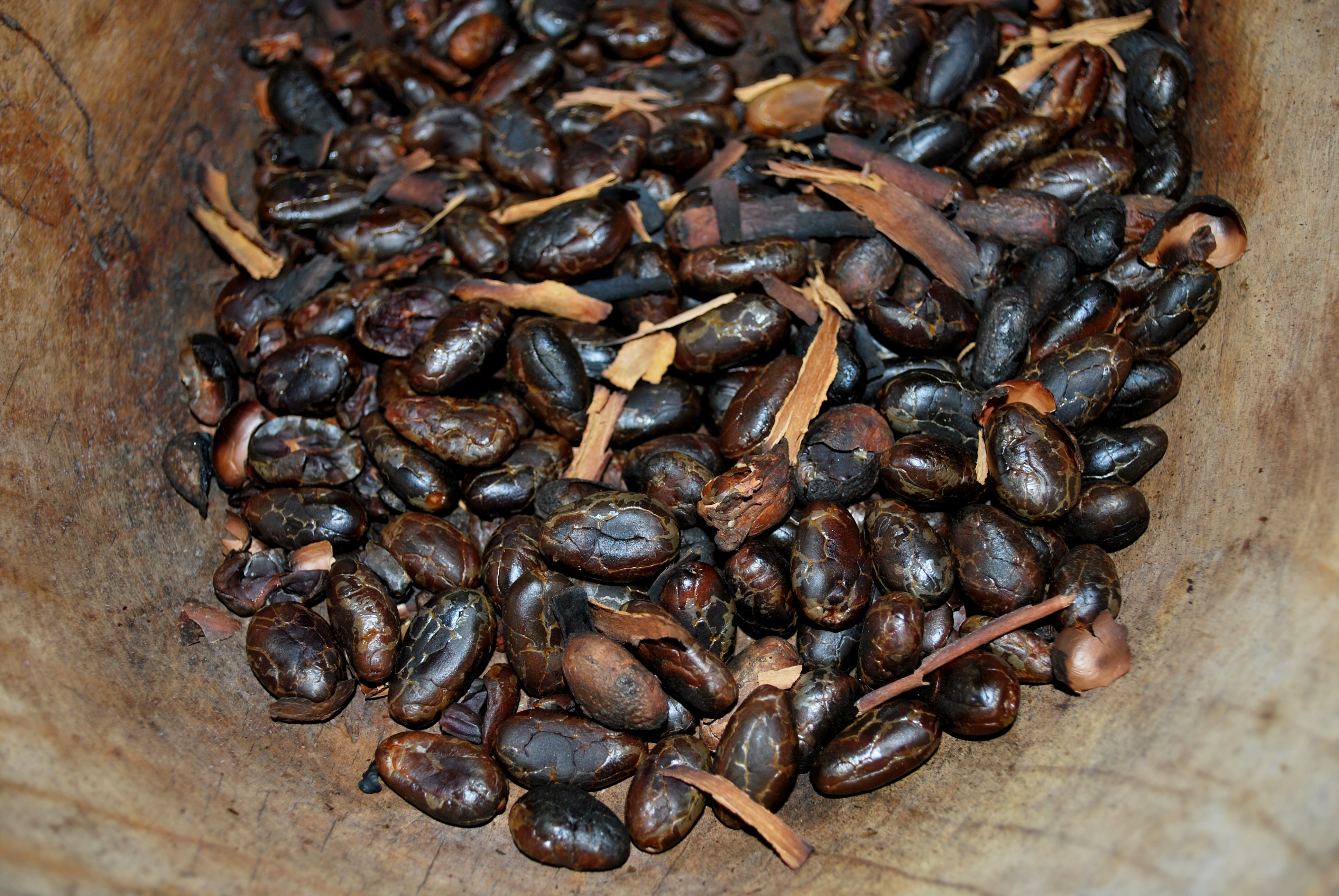La Chonita Hacienda on:
[Wikipedia]
[Google]
[Amazon]
 La Chonita is a 200 + year old former
La Chonita is a 200 + year old former

 The hacienda extends over thirty hectares located in the municipality of
The hacienda extends over thirty hectares located in the municipality of
hacienda
An ''hacienda'' ( or ; or ) is an estate (or ''finca''), similar to a Roman ''latifundium'', in Spain and the former Spanish Empire. With origins in Andalusia, ''haciendas'' were variously plantations (perhaps including animals or orchards), ...
which is still a working cacao
Cacao is the seed from which cocoa and chocolate are made, from Spanish cacao, an adaptation of Nahuatl cacaua, the root form of cacahuatl ("bean of the cocoa-tree"). It may also refer to:
Plants
*''Theobroma cacao'', a tropical evergreen tree
** ...
and sugar cane farm along with some tourist services. It is located in the Mexican state of Tabasco and part of the Cacao Route that the state promotes. While it is much smaller than it was before the Mexican Revolution
The Mexican Revolution ( es, Revolución Mexicana) was an extended sequence of armed regional conflicts in Mexico from approximately 1910 to 1920. It has been called "the defining event of modern Mexican history". It resulted in the destruction ...
, it still produces cacao and sugar cane along with organic earthworms for composting. The former main house for the hacienda is now a youth hostel
A hostel is a form of low-cost, short-term shared sociable lodging where guests can rent a bed, usually a bunk bed in a dormitory, with shared use of a lounge and sometimes a kitchen. Rooms can be mixed or single-sex and have private or shared ba ...
and dormitory for students and the site provides a number of other tourism services.
History
The hacienda’s establishment has been dated to the year 1800, but little has been written about it. Oral tradition states that it was originally called La Chona in reference to the hundreds of acres of lands that originally belonged to it. In the 19th century, the hacienda was the property of the Cruces family, with the first known owner being Benito Cruces, the father of Santiago Cruces Zentella, the governor of Tabasco in the 1870s. The hacienda lost most of its lands during the Mexican Revolution and is now called La Chonita (“little Chona”). Much of the former property is now La Chonita Ejido. The main hacienda house, along with of property now belongs to a family named Fernández.Description
Cunduacán
Cunduacán is a municipality in the central portion of the state of Tabasco, in Mexico. It is located at about 18°4'0"North, 93°10'0"West.
It is located in the Grijalva River Region, Chontalpa
Chontalpa is an area in the Mexican state of Tab ...
in the Chontalpa
Chontalpa is an area in the Mexican state of Tabasco, which consists of four municipalities in the northwest of the state. Although the name refers to the state's Chontal Maya population, modern Chontalpa is a subregion of the Grijalva Region, a ...
region of Tabasco. It is part of the Cacao Route along with various other chocolate haciendas such as La Luz and Jesús María and the Comalcalco (archaeological site) archeological site. Today it is the property of Benito and Alfonso Fernández, who have preserved the house almost completely intact. The main room of the house contains photography done by former owner Santiago Cruces, as well as preserved specimens of a serpent locally called mazacoatl. The front yard has a small deep well, an old sugar mill and an area dedicated to the raising of earthworms.
The hacienda grows cacao
Cacao is the seed from which cocoa and chocolate are made, from Spanish cacao, an adaptation of Nahuatl cacaua, the root form of cacahuatl ("bean of the cocoa-tree"). It may also refer to:
Plants
*''Theobroma cacao'', a tropical evergreen tree
** ...
and sugar cane. Another important industry is the raising of organic earthworms for composting. In a closed section in the back of the property, iguana
''Iguana'' (, ) is a genus of herbivorous lizards that are native to tropical areas of Mexico, Central America, South America, and the Caribbean. The genus was first described in 1768 by Austrian naturalist Josephus Nicolaus Laurenti in his bo ...
s, alligators and Central American river turtle
The hickatee (''Dermatemys mawii'') or in Spanish ''tortuga blanca'' ('white turtle'), also called the Central American river turtle, is the only living species in the family Dermatemydidae. The species is found in the Atlantic drainages of Ce ...
s are allowed to reproduce each year.
It offers various services such as environmental education, workshops on how to prepare chocolate from cacao, Frisbee golf
Disc golf, also known as frisbee golf, is a flying disc sport in which players throw a disc at a target; it is played using rules similar to golf. Most disc golf discs are made out of polypropylene plastic, otherwise known as polypropene, which ...
, classes on the plants and animals of Tabasco, bicycle and kayak
A kayak is a small, narrow watercraft which is typically propelled by means of a double-bladed paddle. The word kayak originates from the Greenlandic word ''qajaq'' ().
The traditional kayak has a covered deck and one or more cockpits, each se ...
rentals, fishing, camping and lodging. The hacienda sells chocolate products and local handcrafts. It is a youth hostel and it also provides student housing during the school year. It offers tours of its cacao and sugar fields. The temazcal sauna is relatively unknown in Tabasco although it was used by the Mayas
The Maya peoples () are an ethnolinguistic group of indigenous peoples of Mesoamerica. The ancient Maya civilization was formed by members of this group, and today's Maya are generally descended from people who lived within that historical reg ...
. It is constructed to resemble a return to the maternal womb, spiritually that of Mother Earth. The hacienda has two temazcals, a more modern one with a cement roof and the other more traditional with a clay roof. It also has a building dedicated to recreational and therapeutic massage as well as space for indigenous inspired rites.
References
{{coord missing, Tabasco Buildings and structures in Tabasco Education in Tabasco Tourist attractions in Tabasco